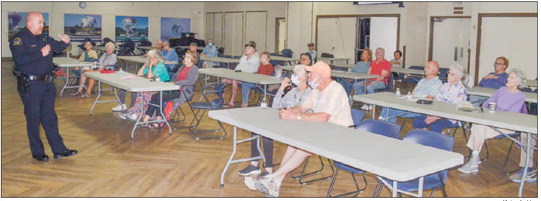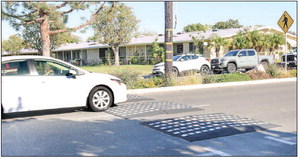Korean War and the Hungnam Evacuation remembered
MEMBER COLUMN
by Grace Kim
LW contributor
On June 25, 1950, the Communist North Korean Army invaded and overtook Seoul, the capitol of South Korea in just three days. The army advanced forward so rapidly that it occupied almost all of South Korea in 60 days or so.
In response to the deteriorating situation in South Korea, Gen. MacArthur, the supreme commander of UN Forces and a brilliant military tactician, directed a brilliant surprise attack on the Inchon Harbor on Sept. 28, 1950. The highly successful maneuver split the North Korean Army in half. Gen. MacArthur is still loved by Korean people as their hero.
After the Inchon landing, UN Forces advanced north up to Yalu River bordering China. However, the fighting took a sharp turn due to a swift counter attack by more than 300,000 Chinese communist soldiers who called themselves the Chinese Volunteer Army.
U.S. Marines were encircled and trapped in Chosin Reservoir mountains by the Chinese Army, and many died in the attack. It was freezing cold, and many wounded soldiers froze to death.
There were many U.S. soldiers who had never seen snow or experienced such bitter cold winter in their lives.
In response to the unexpected Chinese involvement, Gen. MacArthur ordered about 200 U.S. Navy ships and Merchant marine cargo ships assemble at Hungnam area harbor in order to evacuate 100,000 UN Forces, 18,000 tanks and vehicles and 350,000 tons of military supplies.
Additionally there were another 100,000 North Korean refugees waiting at harbor with hopes of getting aboard one of those ships to flee from the communist North Korea in search of freedom. These people enthusiastically welcomed and supported UN Forces while they were advancing north.
UN supporters were afraid of being killed or put in prison if they were to remain in North Korea.
Lt. Gen. Edward Almond was responsible for the huge evacuation of all military personnel, weapons and supplies but did not consider at all the possibility of having to accommodate 100,000 North Korean refugees aboard ships.
Initially, he refused to take in these refugees. Some commanding officers were against picking up the refugees, claiming that “they are enemy aliens, and some of these people might sabotage or plot destructive acts in the ship.”
However, South Korean President Syngman Rhee, some South Korean generals, and particularly Dr. Bong Hak Hyun, MD, a personal friend and advisor to Gen. Almond, urged him to allow the refugees aboard the ship to save them from the North Koreans.
Finally at the last moment, Gen. Almond agreed to take the refugees to South Korea. Thus, they got on aboard and were situated between weapons and tanks, wherever space was available. So the refugees were saved and transported safely to Koje Island.
Just prior to their departure, U.S. Navy ships destroyed weapons and equipment left in the harbor, and Navy cruisers fired heavy 8-inch guns at the approaching Chinese army.
Frank Dayak who lives in Long Beach was the ship’s electrician, one of a 55-man crew of the Rochester, one of the two cruisers at that time. After he was discharged from the Navy, he became teacher in Long Beach Unified School District, and now he is retired.
During this evacuation, my husband’s responsibility was to work with the captain of one of the merchant marine cargo ships, broadcasting the captain’s announcements in the Korean language.
My husband, Luke, used a loudspeaker system so he could be heard throughout the ship, whenever the captain needed to communicate instructions, warnings and any other items to the Korean soldiers and Korean refugees.
Luke was a 20-year-old premed student at Seoul National University Medical School.
Because he had good command of English language, he was recruited by the South Korean Army as an interpreter. His task was to translate into English communication between the South Korean Army and UN Forces fighting in North Korea.
Therefore, he participated in Hungnam Evacuation, which was the largest marine evacuation in the military history.
When Luke went aboard the merchant marine cargo ship, he found North Korean refugees jampacked on the deck like sardines in a can.
They had to hold on to each other because of strong wind. Babies were born during the journey, and fortunately, there were Korean midwives who safely delivered them.
Because of this humanitarian historical evacuation, the refugees were able to settle in South Korea and enjoy new freedom.
The Korean War is not a forgotten war.
We will never forget all young soldiers’ sacrifices and their love of liberty and justice and democracy in Korea.


